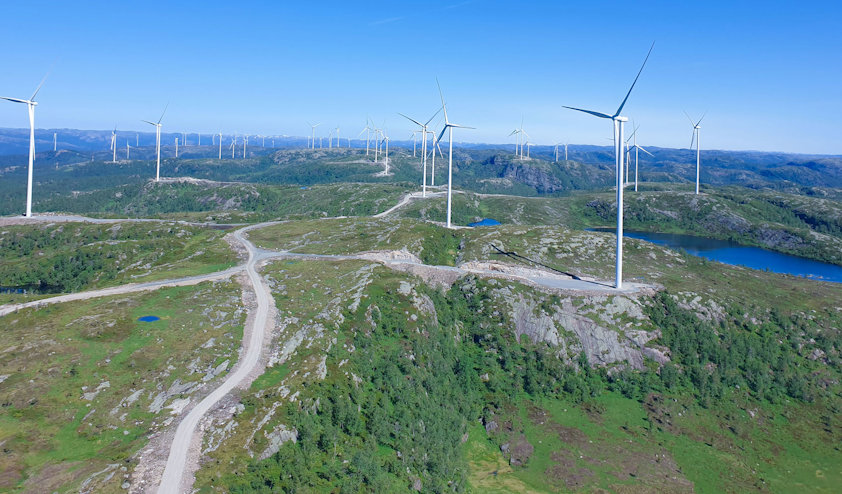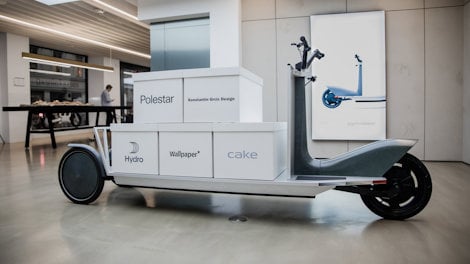Why you should know how materials are made and how EcoDesign can reduce the environmental footprint
Does it matter where and how the materials we use are made? You bet it does. With Hydro EcoDesign, products get increased functionality and smaller environmental footprints.

The spotlight on more sustainable products, environmental requirements in purchasing processes and new standards that set requirements for recycled content or CO2 emissions in production, has increased significantly in recent years.
The next time you are going to develop a modern building, a new door or bumper for a car, or are challenged to reduce CO2 emissions in a given project, what should you do?
A good starting point is material choice, and ensure that the product can be recycled, in accordance with new requirements that are on the way from the European Union. If you start here, you can help develop goods produced with fewer resources, which last a long time and can be recycled.
When we know that up to 80% of a product's environmental footprint is decided in the design phase, it goes without saying that engineers and product designers through their material and design choices have great influence.
Start by asking two questions
Despite many standards and criteria that will make it easier to create more sustainable products, navigating the landscape of materials, life-cycle analysis, procurement requirements and standards is complicated. It is therefore important to know what questions you should ask your material suppliers and what data you need. With the right information at hand, you can make the right choices early in the product development process, which are also the right choices for the environment.
Often there is a requirement for a specific material or degree of recycling. The most important thing is therefore to ask yourself the following questions; Will the choices I make help reduce the product's environmental footprint? And/or ensure that the product can be recycled at the end of its life?
Four things you need to know about material selection
What are sustainable materials? The lack of transparency regarding the origin of materials and environmental footprints is one of the biggest challenges. Other challenges are availability and volume. These are some of the biggest obstacles to the transition to a more circular economy.
Here are four points it is important to know about material selection from an environmental perspective:
1. Gain an understanding of the total footprint of a material
It is useful to know the GHG Protocol – an internationally recognized method for calculating and reporting greenhouse gas accounts for companies and organizations. Reporting in accordance with the GHG Protocol takes place in three different scopes, and is referred to as Scope 1, Scope 2 and Scope 3. Scope 1 includes direct emissions of greenhouse gases within its own operations; Scope 2 includes indirect emissions of greenhouse gases from purchased electricity, heating, cooling and steam; while Scope 3 includes other indirect emissions of greenhouse gases that occur elsewhere in the value chain, by e.g. production of purchased materials or transport. For materials such as aluminum, it is important to request that all scopes are included in the carbon footprint calculation if you are to understand the metal's actual environmental footprint.
2. Familiarize yourself with the definitions of recycled content
When it comes to aluminum, for example, you can be offered products with recycled content that comes from process scrap (pre-consumer scrap), and aluminum that is recycled from used scrap (post-consumer scrap). Both are important to recycle. However, as we want to reduce waste and scrap from production, we also want to increase the use of used scrap from aluminum that has lived a life in a product – be it used soda cans, old car parts or windows. Another issue is that process scrap is imported from other parts of the world where aluminum is produced with coal as an energy source, and then sold as recycled aluminum in Europe. This is obviously not environmentally friendly and it is important to be aware of.
3. Set requirements for suppliers for certification and traceability
There are several schemes that make this possible. For aluminum, there is ASI certification. In addition, many companies – such as Hydro – have had their low-carbon and recycled products certified by a third party such as DNV.
4. Familiarize yourself with Eco-design
Familiarize yourself with the principles of Eco-design, a dedicated methodology that helps you create products with increased functionality and a lower environmental footprint. Hydro EcoDesign is a design concept that can help you make products with increased functionality and a smaller environmental footprint. In the design process we work together on topics like designing for disassembly, disruptive business models, take-back systems, supplier engagement, packaging and enhanced recycling. Read more about Hydro EcoDesign in this free white paper:
How does the industry work to develop greener products?
For us at Hydro, it is about cutting emissions at the same time as we produce more – produce more for less. Norway is among the countries with the best conditions for success in this. An example of this is that our Norwegian smelters have CO2 emissions of less than a quarter of the global average for aluminum production. Our Norwegian aluminum production is based on 100% renewable energy.
At Hydro, we will cut our carbon emissions by 30% by 2030, and with new technology and new thinking, we will work toward zero emissions.
As part of this, we have launched two series of greener aluminum – recycled aluminium and low-carbon aluminium, where the goal is to ensure that we clearly label the products that are better than others from a sustainability perspective.
At Hydro, we will cut our carbon emissions by 30% by 2030, and with new technology and new thinking, we will work toward zero emissions.
– Bjørn Kjetil Mauritzen, Head of Sustainability
The products have names that will make it easier for our customers to use this in their marketing. Not to greenwash but to inform and inform the end customer about the origin and footprint.

Greener aluminum?
Yes, aluminum is very energy intensive in primary production. This makes us part of the problem, but therefore also part of the solution. All materials come with a footprint, and Hydro is on a journey toward more environmentally friendly products. At the same time, it is important for us to show that we are constantly working to improve ourselves and share the milestones along the way, even before we reach our goals.
Part of this is to provide our customers with products that enable them to work for their sustainability goals. We want to show that it means a lot where and how a material such as aluminum is produced. The products we label as greener consist of either used aluminum or aluminum produced from renewable energy.
The purchasing power of engineers is great
Material suppliers such as Hydro work continuously to reduce footprints from production in Norway and the rest of the value chain. But purchasing power will be an important accelerator in the green transition and therefore engineers' knowledge of material selection from a life-cycle perspective is crucial.
So the next time you need to develop a modern building, develop a new door or bumper for a car, or get a challenge from a customer to reduce CO2 emissions in a project – what should you do?
Here is our advice: Get an understanding of your material's total footprint, familiarize yourself with definitions of terms with regard to recycled content and set requirements for suppliers regarding certification and traceability. Last but not least, familiarize yourself with the principles of Eco design.
In this way, engineers and designers can help accelerate the green shift and ensure that consumers have greater freedom of choice on more-sustainable products.
(Note: A version of this article first appeared in the Norwegian magazine Teknisk Ukeblad.)



